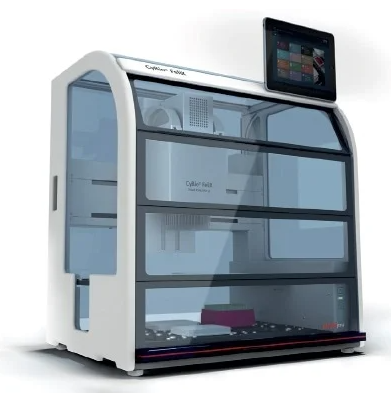NGS PANELS

Next-generation sequencing (NGS) technology has completely changed the field of genomic medicine by allowing researchers to better comprehend human diseases and pinpoint their genetic underpinnings. These initiatives have sparked the creation of effective preventive strategies and assisted medical professionals in developing pharmaceuticals that are particularly formulated to treat a variety of illnesses without side effects. We offer a broad selection of NGS panels that have been created with an emphasis on offering diagnosis and prognosis choices for the treatment and prevention of a number of hereditary and somatic malignancies, cardiovascular, pulmonary, and neurological disorders..
What is Whole genome sequencing (WGS)?
Every living creature has a unique genetic code, or genome, made up of nucleotide bases, including bacteria, plants, and animals (A, T, C, and G). If you know the order of the bases, you can identify an organism’s unique DNA pattern. The procedure of determining the bases’ order is known as sequencing. A laboratory technique known as whole genome sequencing can be used to establish the base order of an organism’s genome in a single step.
What is the process of whole genome sequencing?
The four main steps that scientists use to accomplish whole genome sequencing are as follows:
- DNA shearing: The DNA, which is composed of millions of bases (As, Cs, Ts, and Gs), is first divided into manageable pieces that can be read by a sequencing machine using molecular scissors.
- DNA bar coding: The addition of small DNA tags or bar codes allows researchers to identify whose bacterium a sheared DNA fragment belongs to. The way a grocery store’s bar code identifies a product is similar to how this does.
- DNA sequencing: The bar-coded DNA of several bacteria is combined and put into a DNA sequencer. The sequencer identifies the A, C, T, and G bases, or structural components, of each bacterial sequence. The sequencer uses the bar code to keep track of which bases belong to which bacteria.
- Data analysis: Researchers use computer analysis methods to analyze sequences from distinct microorganisms and identify differences. The degree of differences among the bacteria can be used to estimate their degree of similarity and the likelihood that they are linked to the same outbreak.
Exome sequencing, commonly referred to as whole exome sequencing (WES), is a genetic technique for sequencing each gene’s protein-coding region (known as the exome). There are two parts in this process: the first is to only select DNA sequences that code for proteins. These regions are called exons, and there are about 180,000 of them in the human genome, or about 30 million base pairs, or about 1% of the entire genome. The next step is to sequence the exonic DNA using a high-throughput DNA sequencing method.
Why Whole Exome Sequencing?
This approach seeks to identify genetic variants that alter protein sequences as opposed to whole-genome sequencing. Because these mutations can be the source of Mendelian and common polygenic illnesses, such Alzheimer’s disease, whole exome sequencing has been employed in both academic research and clinical diagnosis.
- Allows entire exon coverage to focus on medically relevant genomic regions, such as untranslated and known disease-associated regions (UTRs).
- Increases the likelihood that variants may be discovered using next-generation sequencing (NGS) technology, particularly rare and low-frequency mutations.
- Provides a less expensive alternative to WGS and eliminates the necessity for complete genome sequencing.
- Transcriptome
The term “transcriptome” refers to the whole collection of messenger RNA, or mRNA, molecules that a given organism expresses. The term “transcriptome,” or transcriptome, refers to the range of mRNA transcripts produced in a particular cell or tissue type. Contrary to the genome, which is characterized by its stability, the transcriptome actively changes. In reality, an organism’s transcriptome varies depending on a wide range of factors, such as its environment and stage of development.
The microarray is a laboratory technique that can be used to investigate the transcriptome. Microarrays can be used to simultaneously assess the expression of thousands of genes in addition to generating gene expression profiles, which describe changes in the transcriptome in response to a specific condition or medication.
Whole transcriptome sequencing (WTS) enables V-Labs to gain greater understanding of the RNA patterns of patient malignancies. WTS provides extraordinarily thorough coverage (coverage) and outstanding resolution (depth) into the dynamic dynamics of the transcriptome.
With WTS, it is feasible to analyze gene expression, find gene fusions, and find RNA splice variants with just one simple test. The test can identify fusions regardless of DNA breakpoints and can detect unusual or novel fusion events better than targeted RNA sequencing or DNA-based techniques. Because whole transcriptome sequencing provides comprehensive exon coverage and gathers virtually all potential fusion partners, it can reliably detect different forms of expressed gene fusions while reducing false positives brought on by non-expressed rearrangements.
With Whole Exome Sequencing (WES), Whole Transcriptome Sequencing (WTS), extensive proteome testing services, and cutting-edge machine-learning capabilities, V-Labs molecular profiling provides the most comprehensive and therapeutically applicable molecular profile for cancer patients on the market.
Advantages of RNA Analysis via Whole Transcriptome Sequencing
Chromosomal rearrangements.
- DNA sequencing in formalin-fixed materials can detect some chromosomal rearrangements, but it can be difficult to find breakpoints within large regions of repeating intronic sequence when using short sequence reads.
- If a fusion gene is expressed in mRNA, DNA sequencing CANNOT show it.
- DNA sequencing is unable to find read-through fusions.
Variants Transcripts
- Because of variation mRNA splicing, variant mRNA transcripts cannot be directly detected by DNA sequencing.
- MI Transcriptome RNA sequencing WILL find variant transcripts by simply looking at the spliced mRNA.
- When examining biological processes, RNA sequencing yields more useful data; MI Transcriptome will offer an estimation of the levels of gene expression for use by pathway analysis software.
- Targeted Panel
Using targeted gene sequencing panels, one can examine certain mutations in a sample. Focused panels include a particular group of genes or gene regions that are either known to be or are most likely to be associated with the condition or characteristic being studied. Pre-selected gene panels are available for purchase, or custom panels can be created to incorporate specific genomic areas.
Due to its scalability, speed, and resolution, next-generation sequencing (NGS) enables the evaluation of particular genes of interest. When compared to performing each experiment independently, many samples can be used to study many genes at once, saving time and money. Targeted gene sequencing produces a smaller, more manageable data set than more exhaustive techniques like whole-genome sequencing while also facilitating analysis.
We offer single, double, or triple variant sequencing for any of the genes on our test menu.
– Prenatal testing
– Non invasive Prenatal testing (NIPT)
– Targeted testing (PCR and/or FISH) of relatives of patients who had copy number testing (del/dup studies via aCGH or chromosomal microarray studies (CMA)) at Prevention Genetics is available.
Benefits of Targeted Gene Sequencing
- High-depth sequencing of crucial genes or regions of interest enables the discovery of rare variations (500–1000 or higher).
- Offers cost-effective results for research on genes associated with disease.
- Provides precise, comprehensible data and has the ability to detect changes with low allele frequencies (down to 5%).
Makes it possible for unique or inherited causative mutations to be precisely detected in a single experime.
